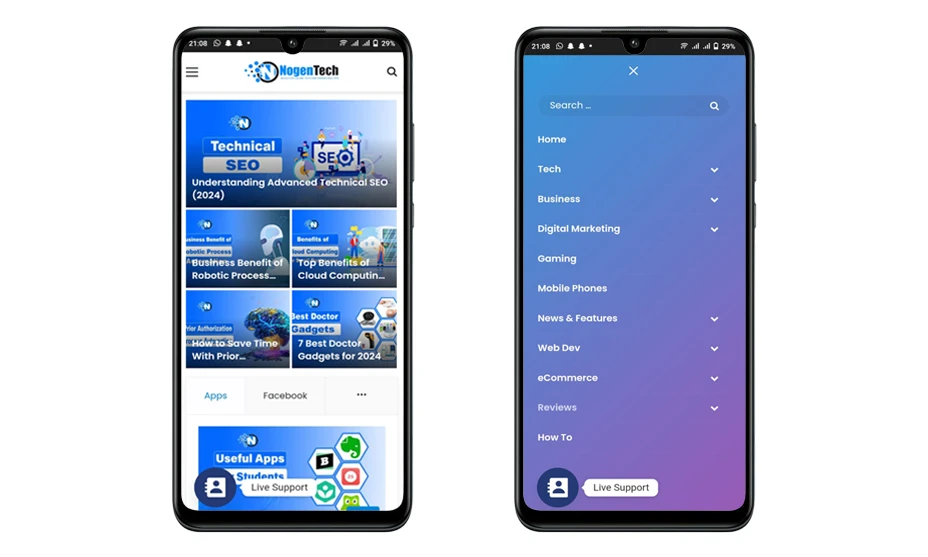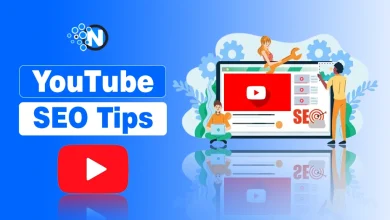
Most website owners focus entirely on on-page and off-page SEO. No doubt, these two are the most dynamic aspects of the search engine optimization strategy; advanced Technical SEO can help you greatly in enhancing the visibility of your site in the search engine results pages.
While most people are unaware of technical SEO alongside its important factors that play a vital role to help you get over the competition.
In this guide, I have elaborated on some of the key aspects of the technical SEO checklist to optimize your website for a better user experience.
Let’s start!
What is Technical SEO?
Technical SEO refers to processes that help in optimizing different technical aspects of a website so that it can appear higher in search engine rankings. The major factors to consider are site speed, mobile-friendliness, XML sitemap, page speed, and structured data for better indexing.
It is necessary to implement the Technical SEO tactics properly as it leads to:
- Improved visibility
- Enhanced user experience
- Higher search rankings
In addition, it creates the foundation for writing high quality content and on-page SEO efforts to get over the competition.
Important Technical SEO Factors
The following are the important advanced technical SEO techniques that play a vital role in improving your site ranking in the SERP. I have described them alongside the common problems and solutions associated with them. You can also perform a technical SEO audit to check out the current status of your website:
1- Crawling and Indexing
Crawling is the process by which search engines discover new web pages on your website. On the other hand, indexing involves storing and organizing these pages in the search engine database. You have to make sure that your site has no crawling and indexing issues to improve the visibility of its content in the search engines.
Problems
Here are some common technical SEO issues you must look out for:
- Blocked Resources: Some resources like CSS and JavaScript are blocked by robots.txt. Thus, it prevents search engine crawlers from crawling and indexing your content.
- Thin Content: Pages with little or no content are indexed sometimes. Consequently, they affect the overall site quality.
- Duplicate Content: Multiple URLs with the same or similar content may confuse search engines which may cause indexing issues.
Solutions
- Unblock Resources: You should update the robots.txt file to make sure the search engine crawlers can access important resources.
- Improve Content Quality: Next, focus on pages with thin content. Add more comprehensive and high quality content to them.
- Canonical Tags: Canonical tags can help you signal Google bots regarding the preferred version of your web pages.
2- Site Structure and Navigation
A well structured website is beneficial in this latest competitive landscape as it helps search engines learn about the relationships between different pages of your site. When you add a proper navigation channel to your site, it ultimately benefits the indexing factors.
Problems
- Deep Pages: There could be chances that you have not mentioned your important pages on the top and they are hidden deep inside the hierarchy.
- Broken Links: There are chances that your site is pointing towards pages which are not available on the web anymore. It could be your site’s own interlinks or outbound links.
- Inconsistent Navigation: While navigation is crucial, inconsistent navigation can cause significant issues. It not only confuses users but also search engines.
Solutions
- Flat Structure: You have to make sure that all the important pages of your site are accessible easily. Further, it is best if they are accessible within three clicks from the homepage. Also, provide direct links to your pillar pages.
- Fix Broken Links: Perform an SEO audit to identify the broken links. You can remove them if they are outbound. Conversely, internal links can be updated by publishing content on the same URL.
- Consistent Navigation: Consistent navigation is necessary to prevent your users and search engines from getting confused.

3- Mobile Optimization
Talking about the latest in advanced Technical SEO is mobile optimization. In the last 10 years, there has been a huge advancement in the development and usage of mobile devices. Therefore, it is necessary for you to optimize your site for smartphones. In this way, there is a maximum chance that it will get a higher SERP ranking.
Problems
- Non-Responsive Design: If your website theme is not suitable for screens of different sizes, it may impact the overall SEO.
- Slow Mobile Load Times: It is also seen that the website theme takes more time to load on mobile devices. Consequently, it causes issues.
- Poor Mobile User Experience: Sometimes, the navigation is not properly optimized for mobiles. Hence, it can be a problematic factor.
Solutions
- Responsive Design: Use responsive design techniques to ensure that your site is opened properly to various devices.
- Optimize Mobile Speed: Compress images and use browser caching to reduce server response times. It will surely improve the speed.
- Enhance Mobile UX: Simplify mobile navigation and add touch-friendly elements to make your site easy to navigate.

4- Page Speed
Fast loading pages are also the latest in advanced technical SEO techniques, as they enhance user experience. The reason is they do not have to wait for longer to get in touch with your content. As a result, it will reduce the bounce rate. Different techniques including the likes of image optimization, browser caching, and CDNs can play a vital role in improving the page loading speed.
Problems
- Large Images: Large images are not usually optimized for search engines. Thus, they reduce the page loading speed.
- Too Many HTTP Requests: If you are receiving a large number of users at a specific time, there are chances that the page speed will be decreased.
- No Browser Caching: Lack of caching increases load times for returning visitors.
Solutions
- Image Optimization: Compress and resize images without compromising their quality.
- Minimize HTTP Requests: You should reduce the number of HTTP requests by combining files and using CSS.
- Enable Browser Caching: Next, implement browser caching to store static resources locally on the servers. In this way, you can assist returning visitors.
5- Duplicate Content
Duplicate content can negatively impact the SEO as search engines may penalize or filter out duplicate pages. Canonical tags are helpful under such circumstances as they indicate the preferred version of a page. In this way, you can avoid duplicate content issues. Further, SEO tools are available that can help you check the duplicate content for more effective insights.
Problems
- URL Parameters: Different URLs with same content due to tracking parameters.
- Printer-Friendly Pages: Duplicate content from printer-friendly versions of pages.
- Content Syndication: Republishing content on other sites creates duplicates.
Solutions
- Canonical Tags: As I mentioned earlier, you should use canonical tags to indicate the original version of a page.
- Parameter Handling: Configure URL parameters in Google Search Console to avoid unwanted outcomes.
- Rel=”nofollow”: Use the rel=”nofollow” attribute for printer-friendly links. As a result, it will help in preventing the indexing.
6- Internal Linking
Internal links are also counted among advanced Technical SEO strategies as they connect different pages within the same website. They are highly useful as they play an exceptional role in enabling search engines to understand the structure of the site and distribute page authority.
Problems
- Orphan Pages: Pages with no internal links leading to them.
- Broken Internal Links: Internal links that lead to 404 error pages.
- Uneven Link Distribution: Some pages have too few or too many internal links.
Solutions
- Strategic Linking: Ensure all pages are linked to from at least one other page.
- Audit Links: Regularly check and fix broken internal links by generating pages or articles on the same link. This is also a benefit of quality content.
- Balanced Distribution: Distribute internal links evenly across important pages.

Final Thoughts
These are the details about the technical SEO and its different essential aspects. It is important for you to understand and implement them perfectly to improve the visibility of your site in SERPs throughout 2025 and beyond.
The enhanced page loading speed and better user experience alongside the removal of other technical errors are the ultimate perks of technical SEO. In this way, search engines consider you a more authentic source of information and rank you higher in the SERP.
If you want to get further assistance, you should hire an advanced Technical SEO Consulting Agency as they possess tools and experience to work in the right direction.




